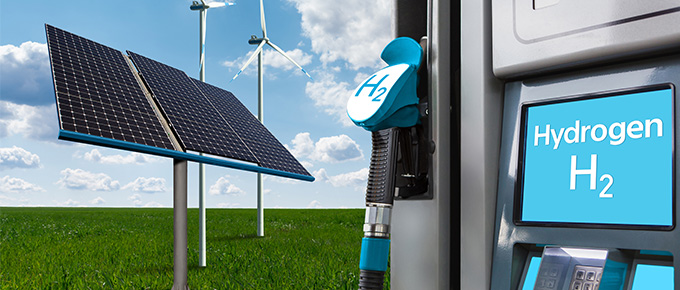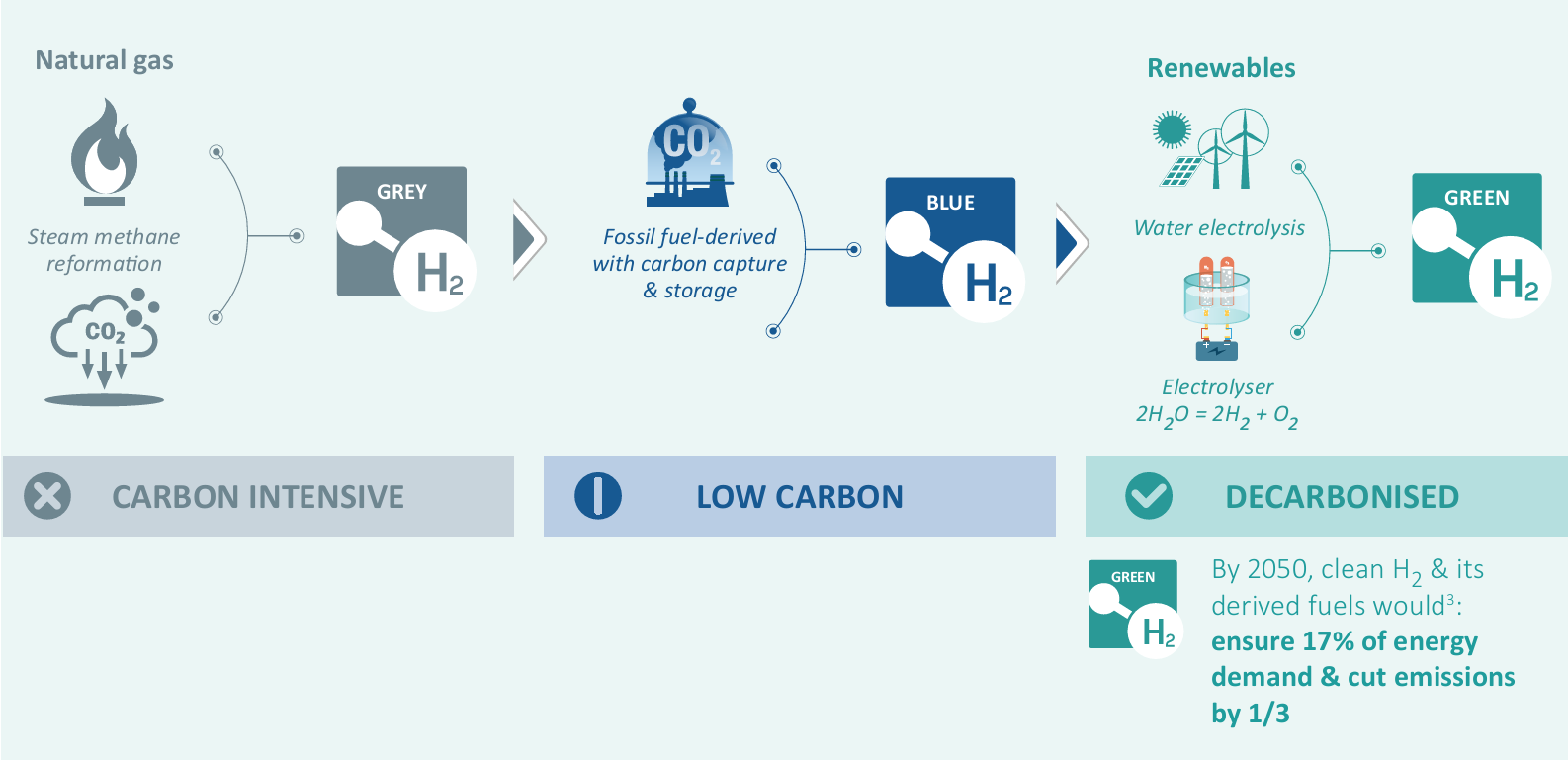Environmental challenges
Hydrogen, future driver of the green revolution

Does hydrogen hold the key to decarbonising our societies? The Hydrogen Council, a global CEO-led initiative launched in 2017 and bringing together leading companies in the energy, transport and industry sectors, has led the charge to place hydrogen squarely on centre stage. Between massive government investments, a proliferation of public and private projects, technological advances and falling prices, hydrogen is emerging as a key solution for tackling climate emergency, capable of achieving what other green energy sources have failed to accomplish on their own, namely to decarbonise the economic sectors responsible for the largest share of greenhouse gases’ emissions.
Unparalleled advantages
Hydrogen presents a paradox. Despite being the most abundant element in the universe, it is practically unobtainable on Earth in its pure form. Since it is extremely light, it is always bonded with other atoms, notably in water, biomass and fossil fuels. When we talk about hydrogen in the energy transition context, what is actually meant is dihydrogen (H2), a clear, odourless gas whose global market demand amounts to around 70 million tonnes a year1. As an important basic material for chemical manufacturers, it is mainly used in ammonia production and petroleum refining.
During combustion, 1 kg of hydrogen releases four times as much energy as 1 kg of gasoil. Like electricity, hydrogen is not an energy source, but rather an energy carrier linking primary energy sources to end uses. A hydrogen vehicle, for example, operates by means of an electrical propulsion system that draws its energy from a hydrogen-powered fuel cell. The list of hydrogen’s possible applications is long, from fuel cells that can power electric vehicles (EVs) or supply electricity in remote or off-grid locations, to injection into natural gas networks or storage solution for renewable energy.
Since it releases water only, hydrogen combustion has the advantage of not emitting sulphur and nitrogen oxide particles. Another benefit is that while it takes several hours to recharge an EV electric battery, a hydrogen tank can be refilled in just a few minutes. “Hydrogen as an energy carrier, offers the possibility to store large quantities of energy, and this is already being harnessed to power personal vehicles and forklifts, largely used in logistic centers. Furthermore, this property of hydrogen is also contributing to meet the decarbonisation challenges in sectors that are heavy greenhouse gas (GHG) emitters, such as long-haul transport”, says the thematic equity management team at CPR Asset Management. In the longer term, hydrogen could enable shipping and aviation to embark on their own green revolutions.
Hydrogen can also be used to store electricity that is not consumed immediately, addressing this way the challenges related to the intermittent nature of renewables such as wind and solar. Surplus electricity is used to produce hydrogen, so that when power production dips, this hydrogen can be converted back into electricity, making it the perfect foil to renewables.
The hydrogen colour spectrum from grey to green
Hydrogen production requires its extraction from a primary source, such as water or natural gas, via a chemical reaction. Therefore, the carbon footprint generated by the production of hydrogen depends on the source and the energy used during the production process.
Yet for infrastructure and cost-related reasons, over 95% of hydrogen is currently produced using fossil fuels: “grey” hydrogen, as it is called, is neither renewable, nor low-carbon. Fortunately, there is a cleaner alternative: decarbonised hydrogen obtained through water electrolysis. “This process, which is more environmentally friendly, requires an electrical current to split the water molecule. This power can come from different sources. If the source is renewable, as in the case where the electrolyser used to ensure the water-splitting process is tied to a wind farm or a photovoltaic plant, the decarbonised hydrogen produced is qualified as ‘green’”, says Christian Lopez, Strategic Investment Advisor at CPR Asset Management.
As is often the case, the big challenge is production cost. Although right now clean hydrogen is more expensive to produce than its grey equivalent, a step-up in global production capacity and the creation of a mass market should help to achieve a better balance. “The cost of producing renewable energy and electrolysers has halved in the last five years”, adds the thematic equity management team. “And research suggests that by the end of the decade, costs will drop by a further 60%-90% compared to today.”
Towards a “Net Zero Economy”
“European Union’s hydrogen strategy is counting on mass production to ramp up Europe’s renewable hydrogen production capacity between now and 2024”, says the the thematic equity management team. Described as the future engine “driving the green revolution”2 by the European Commission, hydrogen is unquestionably one of the most promising solutions when it comes to decarbonising our economies, provided that it is more “green” than “grey”.
Whether used in industry, agriculture, construction or even mobility, green hydrogen can provide a decarbonised energy for production centres, replace manufacturing processes that currently use fossil fuels or offer a genuine alternative to conventional engines. “In steelmaking, for example, more and more companies are converting to less polluting technologies in a bid to reduce the sector’s high carbon footprint. Ditto for the production of fertilisers, cement and in the green chemistry sector”, details Christian Lopez. By replacing fossil fuels with decarbonised hydrogen, whole swathes of our economies could lower their GHG emissions in line with national and international goals.
The global coalition of partners working towards a net-zero economy is constantly adding new members. The willingness of governments to introduce real solutions and have an energy mix capable of addressing the goal of zero net emissions resonates with engagement among economic actors, research, innovation and investors. This combined effort of will is spurring the development of a genuinely innovative and diversified ecosystem, featuring new players and services around hydrogen, ensuring as such that decarbonised hydrogen is definitively a key solution for accelerating the energy transition across all sectors.

Notes—
1. “The Future of Hydrogen”, June 2019, report by IEA (International Energy Agency) for the G20, Japan.
2. https://ec.europa.eu/info/news/focus-hydrogen-driving-green-revolution-2021-abr-14_en
3. “Making the Hydrogen Economy Possible”, April 2021, ETC (Energy Transition Commission).
